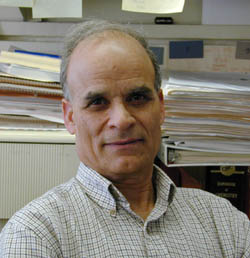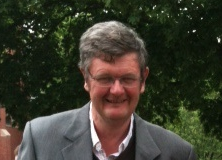Theme: Exploring the Challenges and Recent Innovations in Prevention, Diagnosis and Treatment of Brain Disorders
Brain Disorders 2015
OMICS International organizes conference series all around the world in 2015, here we welcome you to the International Conference on Brain Disorders and Therapeutics during August 24-26, 2015 at London, UK. Brain Disorders conference will be organized around the theme “Exploring the challenges and recent innovations in prevention, diagnosis and treatment of Brain Disorders”.
Brain Disorders are the most common cause of serious disability and have a major but often unrecognized, impact on health and social services. There are 10 million people in the UK living with a neurological condition which has a significant impact on their lives. Mainly stroke, epilepsy, dementia, headache and head injury are the neurological conditions suffered in UK. It has been estimated that the lifetime risk of developing brain and other central nervous system cancer is 1 in 133 for men and 1 in 185 for women in the UK. Each year 600,000 people (1% of the UK population) are newly diagnosed with a brain disorders condition. Primary brain tumors represent about 1.6% of all tumors diagnosed in the UK. The aggregate costs of all mental disorders in the United Kingdom are £32 billion.
London is the most populous city in the United Kingdom. There are about 15 Universities in and around London which are working in the field of Brain disorders. Around 1000 neurologist, psychiatrist and neurosurgeons are working exclusively on brain disorders in London. Along with professional services, media companies are concentrated in London and the media distribution industry is London’s second most competitive sector. Around 80 brain disorders conferences are conducted per year around the world.
National Alliance provided fund of $650 million to fuel the research on mental illness. NARSAD Young Investigator Grant provides $30,000 per year on research in brain and behavior disorders such as schizophrenia, mood disorders, anxiety disorders, or child and adolescent mental illnesses. Brain tumor research receives less than 1% (0.7%) of national cancer research spending in the UK. For More...
Scientific sessions:
Track 1: Brain Disorders: An Over view
Brain function is described as the global integration of local (segregated) neuronal operations that underlies hierarchical message passing among cortical areas and which is facilitated by hierarchical modular network architectures. There are 10 million people in the UK living with a neurological condition which has a significant impact on their lives. Mainly dementia, stroke, headache, epilepsy and head injury are the neurological conditions suffered in UK. The lifetime risk of developing brain and other central nervous system cancer has been estimated is 1 in 133 for men and 1 in 185 for women in the UK. Various disorders affects the function of Human Brain In this track we will discuss few important topics such as: Fragile X in Adults, Dyslexia and Brain Injuries, Bipolar Disorder, Neurodegenerative Diseases, Mental Health Conditions, Child psychiatric disorders, Schizophrenia, Intracranial Hypertension, Encephalitis, Hydrocephalus, Meningitis, Autism, Sleep disorders and Epilepsy and Multiple Sclerosis.
Track 2: Brain Disorders: Causes, Origin, Genesis and Source
Brain diseases occur when brain is damaged by injury, disease or health conditions. The three brain chemicals noradrenaline, dopamine and serotonin are involved in both bodily functions and brain. Serotonin and Noradrenaline have been consistently linked to psychiatric disorders such as bipolar disorder and depression. Dopamine is commonly linked with the pleasure system of the brain. The disruption to the dopamine system is connected to schizophrenia and psychosis which is severe mental disorder characterized by distortions in reality and illogical thought patterns and behaviors. The chemical of brain serotonin is connected to many body functions such as wakefulness, learning, eating, sleep, memory impulsivity, and sexual activity. Researchers believe that abnormal functioning of brain circuits that involve serotonin as a chemical messenger contributes to mood disorders (depressive disorders and bipolar disorder). The goal of this session is to understand the Causes, Origin, Genesis and Source of various types of brain disorders. The following are causes of brain disorders: Trauma to the brain, Brain Tumor, Prenatal damage, Substance abuse, inherited conditions that affect the brain, Brain cancer, Brain Infections, Brain’s electrical pathways
Track 3: Brain Disorder Manifestation
A genetic brain disease caused by a variation or a mutation in a gene. Genetic brain disorders affect the development and function of the brain. The symptoms of brain disorders typically depend on the cause of the condition. Brain disorders may affect the main areas of your brain that control how we move, think, and behave. Some tumors can constrict the blood vessels in brain. The goal of this session is to understand the Manifestation and Diagnosis of various types of brain disorders.
The following are some common symptoms brain disorders may present: confusion or problems concentrating, headaches or migraines, seizures (convulsions), memory problems, change in the behavior, problems with vision (double vision), lack of muscle control, vomiting or nausea.
Track 4: Pathophysiology of Brain Disorders
Biochemical changes in the brain affect mood and other aspects of mental health. Naturally occurring brain chemicals called neurotransmitters play a role in some brain disorders. In some cases, hormonal imbalances affect mental health.
Pathophysiology of brain disorders depends on Inadequate Nutritional Intake, Impaired Thiamine Utilization, Mechanisms of Brain Injury, Global Cerebral Ischemia, and Pressure on nerve tissue / blood supply may result in permanent damage, Combination of genetic and environmental factors, Loss of directionality of impulse, Serotonergic and neurotransmitter alteration, Neurochemistry and neurophysiology of stress
Track 5: Brain Disorder: Anticipatory Measure and Pervasiveness
The modern noninvasive techniques applied to the human brain allow the mapping of anatomical regions and their interconnecting pathways at near millimeter resolution. The creation of maps of structural or functional connections brings the challenge of extracting relevant or significant aspects of network organization and this challenge can be met by applying modern network modeling and analysis tools. The structural connectivity describes anatomical connections linking a set of neural elements whereas functional connectivity is generally derived from time series observations, and describes patterns of statistical dependence among neural elements. The connectivity pattern is formed by structural links such as synapses or fiber pathways or it represents statistical or causal relationships measured as cross correlations, coherence or information flow. Neural activity and by extension neural codes which are constrained by connectivity. Brain connectivity is thus crucial to elucidating how neurons and neural networks process information.
Diagnostic tests and procedures are vital tools that help physicians confirm or rule out the presence of a neurological disorder or other medical condition. Each year 600,000 people (1% of the UK population) are newly diagnosed with a brain disorders condition. Primary brain tumors represent about 1.6% of all tumors diagnosed in the UK. The aggregate costs of all mental disorders in the United Kingdom are £32 billion.
Imaging tests such as CT— Computed Tomography, MRI— Magnetic Resonance Imaging, Angiography, positron emission tomography (PET— Radionuclide Scanning), and Doppler ultrasonography are commonly used to diagnose neurologic disorders.
Track 6: Associated Disorders
Several complications can occur immediately or soon after a traumatic brain injury. Severe injuries increase the risk of a greater number of complications and more severe complications. Moderate to severe traumatic brain injury results in prolonged or permanent changes in a person's state of consciousness, awareness or responsiveness.
Different states of consciousness include: Coma, Vegetative state, minimally conscious state, Locked-in syndrome, Brain death, Seizures, Fluid buildup, Nerve damage. In some case people with bipolar disorder experience unusually intense emotional states that occur in distinct periods called "mood episodes" leading to bipolar depression.
Severe head injuries cause serious complications. This is mainly because a serious injury can damage the brain, sometimes permanently. Alzheimer's disease damages nerve cells in parts of the brain involved in memory, learning, language, and reasoning. Autism is a neurodevelopmental disorder characterized by impaired social interaction, verbal and non-verbal communication, and restricted and repetitive behavior. Autism appears to result from developmental factors that affect many or all functional brain systems and to disturb the timing of brain development more than the final product. Epilepsy can have both genetic and acquired causes, with interaction of these factors in many cases. Epilepsy may occur as a result of a number of other conditions including tumors, strokes, head trauma, previous infections of the central nervous system, genetic abnormalities, and as a result of brain damage around the time of birth. Parkinson's disease is a degenerative disorder of the central nervous system mainly affecting the motor system. The motor symptoms of Parkinson's disease result from the death of dopamine-generating cells in the substantia nigra, a region of the midbrain. Meningitis is an acute inflammation of the protective membranes covering the brain and spinal cord, known collectively as the meninges. The most common symptoms of meningitis are headache and neck stiffness associated with fever, confusion or altered consciousness, vomiting, and an inability to tolerate light or loud noises.
Track 7: Diagnosis: Analysis, Assessment and Psychoanalysis
Neuro imaging includes the use of various techniques to either directly or indirectly images the structure, function/pharmacology of the nervous system. It is a relatively new discipline within medicine and neuroscience/psychology. As neuro imaging research continues to grow, dynamic neuro informatics systems are necessary to store, retrieve, mine, and share the massive amounts of data. The Collaborative Informatics and Neuro imaging Suite (COINS) have been created to facilitate communication and cultivate a data community. This web-based neuro imaging and neuropsychology software suite offers versatile, automatable data upload/import/entry options, rapid and secure sharing of data among PIs, querying and export all data, real-time reporting, and HIPAA and IRB compliant study-management tools suitable to large institutions as well as smaller scale neuroscience and neuropsychology researchers.
Neuro imaging research has been used to enrich our understanding of the neural basis of a wide variety of cognitive abilities, including attention, language, and memory. In addition, neuro imaging techniques have been used to gain insight into the etiology of neurobehavioral disorders, for surgical planning, and to assess functional recovery after brain damage.
Neuro imaging Techniques: Control and Development; Electroencephalography (EEG); Event-Related Potentials (ERPs) and Cognitive Processing; Executive Function and Higher-Order Cognition: Neuro imaging; fMRI: BOLD Contrast; Magnetic Resonance Spectroscopy; Neuro imaging; Perfusion MRI; Single Photon Emission Computed Tomography (SPECT)
Track 8: Brain Neoplasms
A brain tumor is a mass or growth of abnormal cells in brain or close to the brain. Various types of brain tumors are reported till date. Some brain tumors are noncancerous and some brain tumors are cancerous. Brain tumors can begin in your brain at any region, generally primary brain tumors or cancer can begin in other parts of your body and spread to your brain i.e. secondary or metastatic brain tumors. Primary brain tumors can start from brain cells the membranes around the brain and the nerves or glands. Mostly tumors directly destroy brain cells where they can also damage cells by producing inflammation by placing pressure on other parts of the brain, and increasing pressure within the skull. The most common symptoms are: Changes in the person's mental function, Headaches, Seizures and Weakness in one part of the body.
Secondary brain tumors are tumors that result from cancer that starts elsewhere in the body and then spreads to the brain. A third of all brain tumors (34%) are astrocytomas. About 3 out of every 100 brain tumors (3%) are oligodendrogliomas. About 2 out of every 100 brain tumors (2%) are ependymomas. Treatment can involve Chemotherapy, Clinical Trials, Conventional Radiation Therapy, Proton Therapy, Stereotactic Radio surgery, Steroids and Surgery. Primary brain tumors represent about 1.6% of all tumors diagnosed in the UK. The aggregate costs of all mental disorders in the United Kingdom are £32 billion.
Track 9: Neuro degeneration in Stroke: Brain Attack
Neurodegeneration is the process by which a part of your brain dies as a result of trauma or disease. Aging is the overwhelming risk factor for developing any of a number of phenotypically distinct neurodegenerative diseases, and the increasing prevalence, along with human life span, represents a major scientific challenge for the biomedical research community and a growing public health problem.
Neurodegenerative brain diseases are defined as hereditary and sporadic conditions which are characterized by progressive nervous system dysfunction.
Ageing affects many cellular processes that predispose to neurodegeneration, and age-related changes in cellular function predispose to the pathogenesis of PD. The accumulation of age-related somatic damage combined with a failure of compensatory mechanisms may lead to an acceleration of PD with age. The formation of Lewy bodies may represent a marker for protective mechanisms against age-related dysfunction and degeneration of the nervous system.
Ageing is thought to be a stochastic process combining predictable and random effects that lead to the accumulation of unrepaired cellular damage, weakening cellular repair and compensatory mechanisms. Compensatory strategies protective against cell damage and death include mitochondrial oxygenation, ubiquitinization and proteolysis by proteasomes and activity of chaperones and lysosome-mediated autophagy. Ageing is associated with mitochondrial dysfunction, increased free radical production and oxidative stress, which may lead to genomic instability and DNA mutations, with shortening of telomeres associated with reduced survival. Brain tumor research receives less than 1% (0.7%) of national cancer research spending in the UK. Examples of aging-associated diseases are cardiovascular disease, cancer, arthritis, dementia, cataract, osteoporosis, diabetes, hypertension and Alzheimer's disease. The incidence of all of these diseases increases rapidly with aging.
Track 10: Head Ache and Migraines
Headaches are generally classified into two main types: primary headaches and secondary headaches. A migraine, which is a disabling, recurring headache that frequently occurs only on one side of the head and often results in other symptoms, is one type of primary headache. Other primary headaches include cluster and tension headaches. Tension-type headaches are the most common headache, and are often experienced as mild, dull pressure without other accompanying symptoms. Cluster headaches, which are less common than migraines or tension headaches, usually bring severe pain are treated with antinausea drugs and abortive or preventive medications. Headache remedies include pain relievers.
There are many different types of headaches. Although not all headaches are the same, they all share at least one thing in common they cause pain. But many headaches also cause other unwanted symptoms, including nausea and vomiting. This article addresses the most common headache symptoms associated with the different types of headaches. Most headaches and migraines are unpleasant but harmless and can be relieved with self-help measures and pharmacy painkillers. Only a few (around 5%) are a sign that something is seriously wrong. These more serious headaches are often accompanied by other warning signs. For example, a headache accompanied by a rash and a very high temperature could be meningitis. Around 10% of people who have migraines also experience aura symptoms. These are disturbances that start 15 minutes to an hour before the headache. They can include blind spots, flashing lights, zigzag patterns, tingling, pins and needles, or numbness in the limbs. Migraines are believed to be caused by the release of a chemical called serotonin into the bloodstream, resulting in changes in the brain.
Track 11: Cerebrospinal Complications
Cerebrospinal fluid bathes the brain and spinal cord and acts as a cushion to protect these areas. CSF leaks occur through a communication between the lining of the brain and the nose. These communications may occur spontaneously or result from trauma or prior sinonasal surgery. The spontaneous leak occurs in patients who have an elevation in their CSF pressure similar to someone who has high blood pressure. This elevation in pressure causes fluid to leak into the nose since the brain and nose are in close proximity. Any tear or hole in the membrane that surrounds the brain and spinal cord (dura) can allow the fluid that surrounds those organs to leak. This fluid is called the cerebrospinal fluid (CSF). When it leaks out, the pressure around the brain and spinal cord drops. Complications may occur if the cause is surgery or trauma. Infections after surgery or trauma can lead to meningitis and serious complications, such as swelling of the brain. Most CSF leaks are a complication of a spinal tap or surgery. The health care provider should use the smallest needle possible when doing a spinal tap.
Under this track we will discuss about: Hydrocephalus, Neuropathology of cerebrospinal fluid, Cerebro Spinal Fluid Disorders, Cognitive Disorders, Pseudotumor Cerebri, CNS infections, Cerebro Spinal Fluid Analysis
Track 12: Novel Treatment strategies
Alzheimer’s disease affects over five million people in the USA. Currently available drug treatments can only temporarily slow the progression of symptoms, and most recent clinical drug trials have been disappointing. Deep brain stimulation is currently approved by the US Food and Drug Administration (FDA) to treat Parkinson’s disease, essential tremor and dystonia. It has also been used to treat depressive disorders, epilepsy, bipolar disorder, anorexia nervosa, obsessive-compulsive disorder, Tourette’s syndrome, addiction and pain. It is now available in most major medical centers and more than 100,000 patients have been treated to date with over 8,000 new patients implanted each year.
National Alliance provided fund of $650 million to fuel the research on mental illness. NARSAD Young Investigator Grant provides $30,000 per year on research in brain and behavior disorders such as schizophrenia, mood disorders, anxiety disorders, or child and adolescent mental illnesses.
The goal of this session is to understand the Novel Treatment strategies like Therapeutic brain stimulation (electric and magnetic), Tau-Based Treatment Strategies in Neurodegenerative Diseases, Anti-Amyloids therapy, Comprehensive treatment, Therapeutic dilemmas in multiple sclerosis and Future research directions in brain disorders.
Conference Highlights
To share your views and research, please click here to register for the Conference.
To Collaborate Scientific Professionals around the World
| Conference Date | August 24-26, 2015 | ||
| Sponsors & Exhibitors |
|
||
| Speaker Opportunity Closed | Day 1 | Day 2 | Day 3 |
| Poster Opportunity Closed | Click Here to View | ||
Useful Links
Special Issues
All accepted abstracts will be published in respective Our International Journals.
- Journal of brain disorders and Therapy
- Journal of Neurological Disorders
- Journal of Neurology and Neurophysiology
Abstracts will be provided with Digital Object Identifier by











